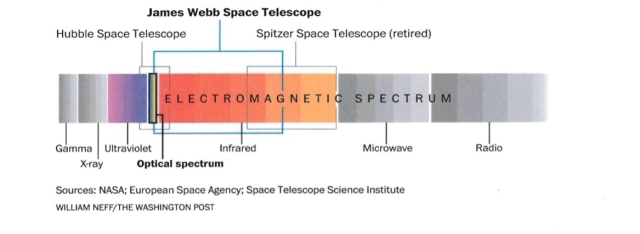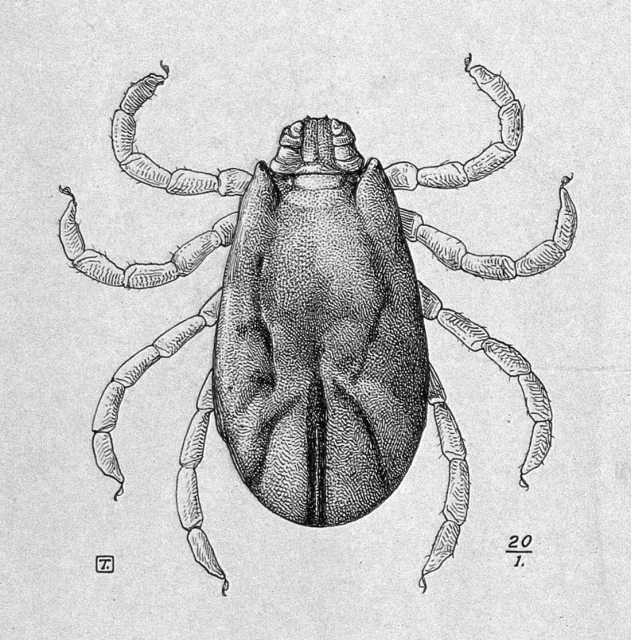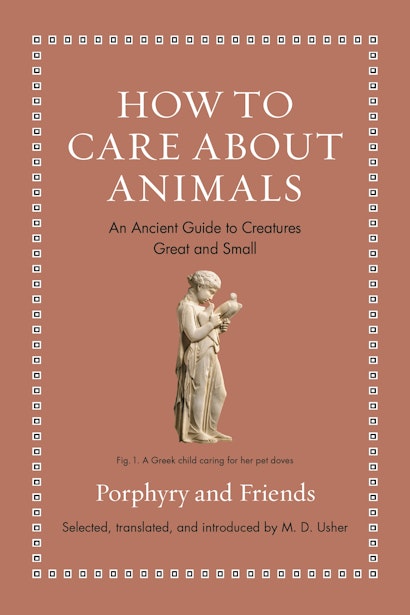When zoologist Ernst Haeckel (1834–1919) coined the word ecology in 1866 he defined it as “the relation of the animal to its organic and inorganic environment.” But did he coin it? Aristotle, arguably the world’s first zoologist, gave a tantalizing preview of the idea in Parts of Animals, written around 350 BCE. Aristotle urges us to study animals closely for what they reveal about the larger world around us, including ourselves, for, as he puts it, “Nature does nothing in vain,” and “in all of Nature there is something wonderful.” His insistence that scientific investigation should always be concerned with systemic wholes is particularly inspired:
Someone who discusses individual parts and their arrangements is not describing their material composition for its own sake but is concerned rather with the conformation of a whole. The same is true of a house—it’s the whole structure that matters, not the bricks, mortar, and timber. Likewise, too, in Nature: the objective is to describe the synthetic whole, not the individual parts that do not occur separately apart from their combination as an entity.
The use of the image of a house (oikos) to describe our domestic arrangement with the biosphere lies, of course, at the etymological and conceptual heart of “ecology”—and “ecosystem” for that matter, a related word, coined in 1935. It is no dead metaphor, and far older than Haeckel or the nineteenth century. The Earth is home to organisms of all sorts.
Biologist Jakob von Uexküll (1864–1944)—pronounced “oox-cool”—elaborated on this idea, dubbing an organism’s environs its Umwelt, a bubble in which both space and time are wholly relative, experienced and navigated uniquely by each species depending on its morphology and sensory receptors. Umwelt, which simply means “environment” in German, is a crucial concept for modern ecology, and a necessary corrective to anthropic bias in human inquiry generally.
The poster child for Uexküll’s thesis is a tiny creature that Nature lovers are bound to encounter on any walk in the woods or gambol through the grass—the ubiquitous tick. The tick has no eyes, cannot hear sounds, and has no sense of taste. It spends most of its time perched at the tip of a blade of grass or under the leaf of a shrub. Astonishingly, a tick can go for eighteen years without eating. It is stimulated to feed only by detecting the presence of butyric acid, which emanates from the skin glands of mammals. The butyric acid provides a chemical signal for the tick to drop from its perch and scurry onto whatever unsuspecting passer-by is unlucky enough have brushed up against or near where it’s lurking. But that sets just the first stage of attack in motion. Contact with the hair of the animal stimulates the tick to crawl around in search of a hairless spot on the skin. Whereupon it is the sensation of warmth from the host’s body—not sight or taste, for the tick lacks the requisite organs, and the butyric acid only impels it to initiate action—that triggers it to bite and feed. Once the tick has gorged itself with the blood of its victim, all that’s left for it to do is to detach from its host, lay its eggs on the ground and die, which it soon does.
What so impressed Uexküll, and should catch our attention as well, is that out of the hundreds of stimuli radiating from any mammal’s body, only three serve as cues for the sensory receptors available to the tick: a chemical stimulus of butyric acid sets the process in motion; a tactile stimulus from the animal’s coat directs it to scour around until it finds a bald patch; and heat, which induces it to bore into the skin. Remarkably, each stimulus works in a definite sequence. What is more, the mammalian host is not really a passive victim at all, but an active participant in a reciprocal scheme: it generates the stimuli in the first place, by virtue of its own chemical and physical characteristics.
The Umwelten of all organisms tell a similar tale. The tick instantiates Uexküll’s arresting conclusion that every creature in Nature “lives in a world composed of subjective realities alone, and that even the Umwelten themselves represent only subjective realities.” This affirmation, based on empirical research on thousands of organisms, speaks volumes about agency in Nature. “Without a living subject,” Uexküll writes, “there can be neither space nor time.” Given the diversity and multiplicity of organisms on the planet, each with its own unique Umwelt, to say that there are many worlds and hidden realms around us is not a figurative expression, or an exaggeration.
Umwelt research corroborates Aristotle’s view that Nature does nothing in vain. On this point Uexküll himself was careful to distinguish between what he calls a goal and a plan. Actions and reactions in an organism’s Umwelt are not purposeful, he suggests, meaning they are not the result of a goal the subject has in view. They are attributable rather to Nature’s plan, which is the result of long co-evolutionary processes. It used to be thought, and is still commonly said, that non-human creatures do what they do by instinct. But instinct doesn’t get us very far. It is a vacuous term, tantamount to saying that we don’t know exactly how or why organisms do what they do. Ethology and even everyday observations of animals, however, give us a better inkling of what’s going on than simply chalking things up to instinct and illustrate likewise the difference between a subject’s goal and Nature’s plan.
Here are two examples.
If you tie a chick’s leg to a ground stake with a string, and I’m not suggesting that you try this at home, it will flail about trying to get away and peep vigorously. The mother hen takes the chick’s peeping as an auditory cue that an intruder is nearby and will thrust out her beak and peck about energetically in the air around the chick, like a shadow boxer, even though there is no predator in sight. If you put that peeping chick under glass so that it is still visible but makes no sound, however, still struggling to escape its tether and in distress though it be, the hen is unfazed and goes about her business as usual, because the perceptual cue of the chick’s peeping, which induces her to peck defensively, is absent. It’s not her goal, in other words, to look out for her chick, come what may. She doesn’t and cannot see the problem is that the chick has its leg tied to a stake. She can only act on the specific stimuli she has evolved to respond to.
Sheep behave similarly. (This my wife and I have tried at home, too many times.) A mother ewe recognizes her lambs by smell and sound, not sight. To entice a new mother into the barn after she’s given birth you need to hold the lamb to her nose and walk slowly, incrementally, to get her to follow. If the lamb is baaing, all the better. Were you to just scoop the lamb up, turn your back, and clamber off, the ewe would run about frantically, sniffing all the other lambs in the barnyard, baaing vociferously, searching for hers. The primacy of the olfactory receptor in ewes is also why the old shepherd’s trick of “grafting” an orphaned or rejected lamb onto a mother who has lost one of her own by flaying her dead lamb and pulling its skin like a sweater over the orphan lamb works so remarkably well. Sheep are not stupid. They’re just keen-scented.
Although the tick is a tiny insect (actually, an arachnid), the consequences and significance of the Umwelt thesis reverberate far and wide, even into outer space. The Webb Telescope, for example, a recent pinnacle of human technological achievement in science, throws the Umwelt problem into high relief, only to underscore, ironically, human limitation and frailty. Consider the following graphic:

We see that the Webb Telescope is an improvement of considerable magnitude on the Hubble, which it replaces. It can capture much more of the infrared spectrum. Yet the mere sliver of the universe’s electromagnetic radiation that falls within human beings’ optical window, as illustrated above, should give us pause. Most of what exists is invisible. Impressively, we have developed instruments to measure gamma, x-ray, ultraviolet, infrared, microwave, and radio frequencies. But we cannot see them. The images of planets, stars, and distant galaxies that we pore over in glossy magazines and that so inspire us are produced using false-color imaging. That is, colors within the optical spectrum are assigned to wavelengths that we cannot see to bring into view physical features that are not otherwise discernible. Slow-motion and time-lapse photography perform a similar trick to compensate for the limitations we face in processing time. The recent David Attenborough documentary The Green Planet (2022) utilizes new photographic techniques that can capture the growth patterns and dynamic behaviours of trees, flowers, vines, and other vegetation over time in stunning detail, revealing that plants, too, respond to stimuli in ways analogous to organisms. They, too, have their own Umwelten.
But it gets worse, or better, depending on your view of humanity’s right and proper place in the cosmos. American philosopher Thomas Nagel, with nary a word about Uexküll or Umwelt, argued for a similar outlook in his classic essay from 1974 “What Is It Like to Be a Bat?” The paper, one should be quick to note, is not really about bats at all. Rather, it’s a critique of reductionism in science and a demonstration of the limits of physicalism as an explanatory criterion. We cannot know subjectively, experientially, what it’s like to be a bat, Nagel shows. The morphologies and sensory receptors of humans and bats are too alien from one another for that to be possible. Even imagining what it’s like to be a bat inevitably projects human sensibilities onto the would-be experience. We get Batman, not a bat. Yet we can infer beyond much doubt that bats themselves must be capable of experiencing what it’s like to be one. Nagel’s verdict cuts to the chase about the significance of the issue: “Reflection on what it is like to be a bat seems to lead us, therefore, to the conclusion that there are facts that do not consist in the truth of propositions expressible in human language.” And yet, he concedes, “strangely enough, we may have evidence for the truth of something we cannot fully understand.” Uexküll, for one, provides such evidence with his Umwelt thesis. That bats possess subjective experience of what it’s like to be a bat, which is beyond our own experiential reach, is proof of the existence of facts about the world that we may never apprehend.
To study animals, Aristotle suggests, is to hold up a mirror to ourselves. Even small or repellent creatures—leeches, say, or maggots—should compel our attention, as the causes and purposes of their morphology and behavior contribute to a better understanding of our place in the world. People, after all, are animals, too. One can only imagine the field day Aristotle would have had with DNA. As is well known now, but wholly unknown then, 99% of our genetic information is shared with chimpanzees. We have about 90% in common with mice; 65% with chickens, which are not even mammals; 60% with bananas, which are not even animals. It is hardly trite or a truism to insist that all living things are connected.
Visionary designer and craftsman William Morris (1834–1896) once famously declared “Have nothing in your houses that you do not know to be useful or think to be beautiful.” Aristotle says that such is already the case in Nature: whatever pertains to ecology also possesses beauty. This is so, he says, because purpose, not chance, characterizes the arrangement of parts in this world. It falls to us to understand and act on those arrangements. There is much we don’t know, or perhaps cannot know. What is, however, outstandingly clear, and what animals teach us time and again, is that in all of Nature there is something wonderful.
M. D. Usher is the Lyman-Roberts Professor of Classical Languages and Literature and a member of the Department of Geography and Geosciences at the University of Vermont. With his wife, he also built, owns, and operates Works & Days Farm, which produces lamb, eggs, and maple syrup in Shoreham, Vermont. His books include How to Be a Farmer: An Ancient Guide to Life on the Land and How to Say No: An Ancient Guide to the Art of Cynicism (both Princeton).

